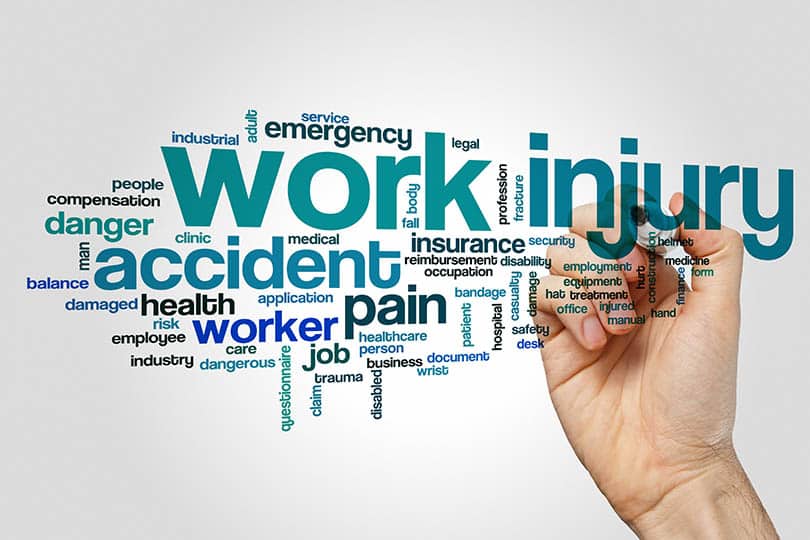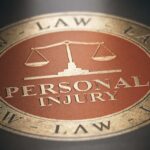Injury on the job lawyer services are crucial for workers facing workplace accidents or illnesses. Navigating the complexities of workers’ compensation claims, third-party liability, and legal procedures can be daunting. This guide offers a comprehensive overview of the legal landscape surrounding workplace injuries, empowering individuals to understand their rights and pursue just compensation.
From understanding different types of workplace injuries and the process of filing a claim, to navigating negotiations and potential litigation, we’ll explore the essential aspects of securing legal representation. We’ll also address common mistakes to avoid and provide valuable insights into building a strong case. This information aims to equip you with the knowledge needed to effectively advocate for your rights and well-being.
Types of Workplace Injuries: Injury On The Job Lawyer
Workplace injuries encompass a wide spectrum of physical and psychological harm sustained while performing job duties. Understanding the different categories of these injuries is crucial for determining eligibility for workers’ compensation and pursuing legal action when necessary. This section will Artikel several common types, highlighting the distinctions between physical and psychological injuries and the unique challenges presented by repetitive stress injuries.
Workplace injuries can be broadly categorized as physical or psychological, though many instances involve a combination of both. Physical injuries are readily apparent, often involving immediate trauma, while psychological injuries can be more insidious and challenging to diagnose and prove.
Physical Workplace Injuries
Physical injuries represent a significant portion of workplace accidents. These range from minor cuts and bruises to severe fractures and amputations. Examples requiring legal representation include:
Many injuries necessitate legal intervention to ensure fair compensation for medical expenses, lost wages, and pain and suffering. The severity and long-term impact of these injuries vary widely, demanding tailored legal strategies.
Navigating the complexities of a workplace injury can be daunting. Securing fair compensation often requires expert legal counsel, and understanding your rights is crucial. If your injury occurred in Savannah, Georgia, consider seeking assistance from a qualified professional, such as those listed on a site like personal injury lawyer savannah ga , to help you navigate the process.
Remember, an injury on the job lawyer can be instrumental in ensuring you receive the care and compensation you deserve.
- Sprains and Strains: These are common injuries resulting from lifting heavy objects, awkward movements, or repetitive motions. A severe back strain, for instance, could lead to long-term disability and significant medical costs, requiring legal intervention to secure adequate compensation.
- Fractures and Dislocations: Falls, machinery accidents, and impacts can cause bone fractures and joint dislocations. These injuries often require extensive medical treatment, physical therapy, and potentially surgery, making legal representation crucial for navigating the complex process of obtaining compensation.
- Burns: Contact with hot surfaces, chemicals, or electricity can result in severe burns, necessitating extensive medical care and potentially long-term rehabilitation. The severity of burns can range from first-degree to third-degree, impacting the level of compensation needed.
- Amputations: Severe machinery accidents or other traumatic events can lead to the loss of limbs, requiring extensive prosthetic care and rehabilitation. These cases often involve significant legal complexities and the need for substantial financial compensation.
Psychological Workplace Injuries
Psychological injuries, often stemming from workplace stress, harassment, or trauma, are equally significant and often more challenging to prove legally. Examples include:
Establishing a direct link between the workplace and psychological injuries can be complex, requiring careful documentation and expert testimony. Legal representation becomes vital in navigating these challenges and securing appropriate compensation.
Navigating the complexities of a workplace injury can be daunting, requiring specialized legal expertise. If your injury occurred in Savannah, Georgia, seeking counsel from a qualified professional is crucial. Finding the right representation starts with a search for a savannah personal injury lawyer , who can then help you understand your rights and pursue the compensation you deserve for your workplace accident.
Remember, an injury on the job lawyer can significantly aid in this process.
- Post-Traumatic Stress Disorder (PTSD): Experiencing a traumatic event at work, such as a violent crime or a near-miss accident, can lead to PTSD. This can manifest in various symptoms requiring long-term therapy and support.
- Depression and Anxiety: Prolonged workplace stress, harassment, or bullying can significantly impact mental health, leading to depression and anxiety. These conditions often require ongoing treatment and can result in lost productivity and income.
- Burnout: Chronic workplace stress and excessive workload can lead to burnout, characterized by emotional exhaustion, cynicism, and reduced professional efficacy. This can have significant long-term effects on an individual’s career and well-being.
Repetitive Stress Injuries (RSIs)
Repetitive stress injuries, such as carpal tunnel syndrome, tendinitis, and other musculoskeletal disorders, present unique legal challenges. Proving causation between the repetitive work tasks and the injury requires detailed medical evidence and expert testimony.
The cumulative nature of RSIs makes it difficult to pinpoint a single incident as the cause. This necessitates a thorough investigation of work conditions and a strong legal strategy to demonstrate the link between the job and the injury. Establishing a clear timeline of symptoms and medical treatment is crucial in these cases.
Many workers performing repetitive tasks, like assembly line workers or data entry clerks, may experience these injuries. The long latency period before symptoms become noticeable can make proving causality challenging. Furthermore, the subjective nature of pain and discomfort associated with RSIs often requires the testimony of medical experts to establish the diagnosis and the causal relationship to the workplace.
Seeking an injury on the job lawyer can be a complex process, especially navigating the legal intricacies of workplace accidents. If you’ve been injured in Houston, finding the right legal representation is crucial. Consider seeking assistance from a reputable firm, such as a houston injury lawyer , who specializes in workplace injury cases. They can help you understand your rights and pursue the compensation you deserve following your on-the-job injury.
Third-Party Liability

Workplace injuries aren’t always solely the fault of the employer. Sometimes, a third party—a person or entity other than the employer or the injured employee—bears responsibility for the accident. Understanding third-party liability is crucial for injured workers seeking full compensation for their losses.
Third-party liability arises when a negligent act or omission by a party not directly involved in the employment relationship causes a workplace injury. This could significantly impact the compensation an injured worker receives, potentially supplementing or even replacing worker’s compensation benefits. Successfully pursuing a third-party claim often requires navigating complex legal procedures and demonstrating a clear causal link between the third party’s negligence and the injury.
Situations Involving Third-Party Liability
Several scenarios can lead to third-party liability in workplace injury cases. For example, a defective product manufactured by a third-party company and used in the workplace could cause an injury. Similarly, a negligent contractor performing work on the premises might be held responsible if their actions lead to an employee’s injury. Another common example involves a negligent driver causing a workplace accident, such as a delivery truck colliding with a company vehicle. In each instance, the injured worker may have grounds to pursue a claim against the third party in addition to, or instead of, their worker’s compensation claim.
Complexities of Pursuing Concurrent Claims
Pursuing a third-party claim concurrently with a worker’s compensation claim presents several complexities. Many states have laws governing the interplay between these two types of claims. For instance, some jurisdictions may require the worker to first exhaust their worker’s compensation benefits before pursuing a third-party claim. Others might allow concurrent pursuit, but the worker may need to reimburse the worker’s compensation insurer for any benefits received if they successfully recover damages from the third party. This process often requires careful coordination with legal counsel to ensure compliance with all applicable laws and regulations and to maximize the worker’s overall recovery.
Comparison of Legal Processes
Worker’s compensation and third-party liability claims differ significantly in their legal processes. Worker’s compensation claims are typically handled administratively through a state-run system, involving relatively straightforward procedures focused on proving the injury occurred during the course and scope of employment. In contrast, third-party liability claims are litigated in civil court, requiring a much more extensive process of proving negligence, causation, and damages. This involves discovery, depositions, and potentially a trial, all of which are far more complex and time-consuming than the administrative process for worker’s compensation. Successfully navigating these different legal systems requires experienced legal representation. For example, in a case involving a defective product, the worker’s compensation claim might cover medical expenses and lost wages while the third-party claim against the manufacturer would seek compensation for pain and suffering, as well as punitive damages depending on the jurisdiction and the facts of the case.
Gathering Evidence

After a workplace injury, gathering comprehensive evidence is crucial for building a strong case. This evidence will support your claim and help demonstrate the employer’s negligence or the third party’s liability. Thorough documentation protects your rights and increases the likelihood of a successful outcome.
Successfully documenting a workplace injury involves several key steps, ensuring you have a complete and accurate record of the events and their consequences. This meticulous approach is vital in navigating the complexities of a workers’ compensation claim or a personal injury lawsuit.
Photographic Evidence
Photographs provide powerful visual evidence of the accident scene, the injured body part, and any unsafe conditions that contributed to the injury. They should be taken as soon as possible after the incident, while conditions remain unchanged. For example, a photograph showing a slippery floor where a fall occurred, or images documenting the severity of a laceration, can significantly strengthen your case. Multiple photos from different angles are recommended, including close-ups and wider shots showing the context. Clear, well-lit photos are essential for admissibility in court. Include a date and time stamp if possible.
Witness Statements, Injury on the job lawyer
Witness accounts can corroborate your version of events and provide valuable context. Obtain written statements from anyone who witnessed the accident or the immediate aftermath. These statements should include the witness’s name, contact information, a description of the events they witnessed, and their relationship to you or the employer (if any). It’s crucial to be prompt in collecting these statements, as memories can fade over time. Keep a record of anyone you attempted to contact, even if they declined to provide a statement. This demonstrates diligence in your pursuit of evidence.
Maintaining Accurate Medical Records
Comprehensive and accurate medical records are the cornerstone of any injury claim. These records document the nature and extent of your injuries, the treatment received, and the prognosis for recovery. Maintain copies of all medical bills, doctor’s notes, test results, and any correspondence with healthcare providers. Follow your doctor’s instructions diligently and attend all scheduled appointments. Any deviation from the prescribed treatment plan could weaken your case. Consistent and accurate medical records are essential for demonstrating the causal link between your injury and the workplace incident.
Organizing Evidence for Court Presentation
Organizing your evidence systematically is crucial for efficient presentation in court. Create a chronological file containing all documentation, including incident reports, witness statements, medical records, and photographs. Label each document clearly and consistently. A well-organized system ensures that you can quickly access and present relevant evidence when needed. Consider using a digital filing system for easy access and searchability. This organized approach not only strengthens your case but also demonstrates professionalism and attention to detail.
Common Mistakes to Avoid

Navigating the complexities of a workplace injury claim can be challenging, and unfortunately, many individuals unintentionally hinder their own cases by making avoidable mistakes. Understanding these common pitfalls and taking proactive steps to avoid them is crucial for maximizing your chances of a successful outcome. This section will highlight frequent errors and offer practical advice to protect your legal rights.
Many individuals, understandably stressed and focused on recovery, inadvertently compromise their claim through actions or inactions. Failing to properly document the injury, neglecting to seek medical attention promptly, or prematurely settling with the insurance company are all examples of how well-intentioned individuals can unintentionally damage their case. Remember, your legal rights are valuable, and protecting them requires careful attention to detail and a strategic approach.
Failure to Report the Injury Promptly
Prompt reporting is paramount. Delays can create doubt about the connection between your injury and your work. For example, if you wait several days to report a back injury sustained while lifting heavy boxes, your employer might argue the injury was unrelated to work activities. Always report workplace injuries to your supervisor immediately, regardless of the perceived severity. Obtain a copy of the incident report and ensure all details are accurately recorded.
Insufficient Documentation
Thorough documentation is essential. This includes detailed medical records, witness statements, photos of the accident scene (if safe and possible), and any related correspondence. For instance, if you only rely on your own recollection of events, your account might lack the supporting evidence needed to strengthen your claim. Collect all relevant information, including names and contact details of witnesses, and maintain organized records of all medical appointments, treatments, and expenses.
Speaking to the Insurance Company Without Legal Counsel
Avoid speaking to the insurance company without consulting a lawyer. Insurance adjusters are trained negotiators; they may attempt to obtain statements that could weaken your case. For example, an adjuster might ask leading questions designed to elicit admissions that could be interpreted against you. Always seek legal counsel before making any statements to the insurance company or signing any documents.
Prematurely Settling a Claim
Resist the urge to accept the first settlement offer. Insurance companies often offer low initial settlements, hoping to avoid a more costly legal battle. Consider a hypothetical scenario where a worker receives an initial offer of $5,000 for a significant injury requiring ongoing medical care and lost wages. This might seem like a considerable amount initially, but it could be insufficient to cover future medical expenses and lost income. Always consult with an attorney to assess the fairness of any settlement offer.
Do’s and Don’ts for Individuals Injured on the Job
It is crucial to understand the best practices for navigating a workplace injury claim. Following these guidelines can significantly improve your chances of a positive outcome.
- Do: Report the injury immediately to your supervisor and follow your company’s injury reporting procedures.
- Do: Seek medical attention promptly and keep detailed records of all medical treatments, diagnoses, and expenses.
- Do: Document the accident scene (if safe to do so) with photographs or videos.
- Do: Gather contact information from any witnesses to the accident.
- Do: Consult with a qualified workplace injury attorney before speaking to insurance adjusters or signing any documents.
- Don’t: Discuss the accident or your injuries with anyone other than your doctor and your attorney.
- Don’t: Post about your injury on social media.
- Don’t: Return to work before your doctor clears you.
- Don’t: Accept the first settlement offer from the insurance company without legal counsel.
- Don’t: Delay seeking legal advice.
Successfully navigating a workplace injury claim requires a clear understanding of your legal rights and the complexities of the legal process. Seeking expert legal counsel from an injury on the job lawyer is often crucial for protecting your interests and obtaining fair compensation. By understanding the steps involved, from filing a claim to potential litigation, and avoiding common pitfalls, you can significantly increase your chances of a favorable outcome. Remember, your health and well-being are paramount, and seeking professional help is a vital step in the recovery process.






